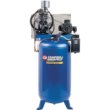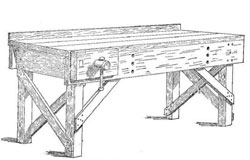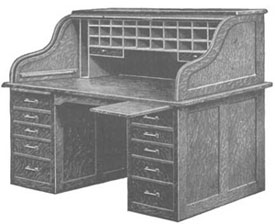Try to select projects you feel
capable of doing but will also offer a bit of a
challenge so you continue to gain additional skills,
many simple plans can be found on the Projects
page. Softwoods such as pine or spruce are good
woods to practice with, when you become more
confident move on to the more exotic woods.
Making shop fixtures and jigs is a
great way to hone your skills, many of them can be
made from used or recycled material, our Shop Jigs
and Fixtures page has a lot of handy ideas.
Add tools as you need them, always
buy the best tool you can afford. There is usually
more than one way to accomplish the same result,
tools are often a matter of preference than
necessity. Consider buying used tools, the build
quality of older tools is often superior to many of
the new tools on today's market.
I have
included sections on hand
tools and power tools
with basic information on using them along with
links to suppliers that can supply you with
further information on specific brands. Any
purchase from those links helps keep this site
online.
Never forget how dangerous a power
tool can be, if you have any hesitation as to the
safety of a situation stop and check out your
options.
If it doesn't
feel good don't do it.
If you are looking for more plans
and ideas check my other site: Absolutely Free Plans
If you
are still one of those among
us that likes to have an actual book in your hands
ask for a Free Catalog from Rockler.




















